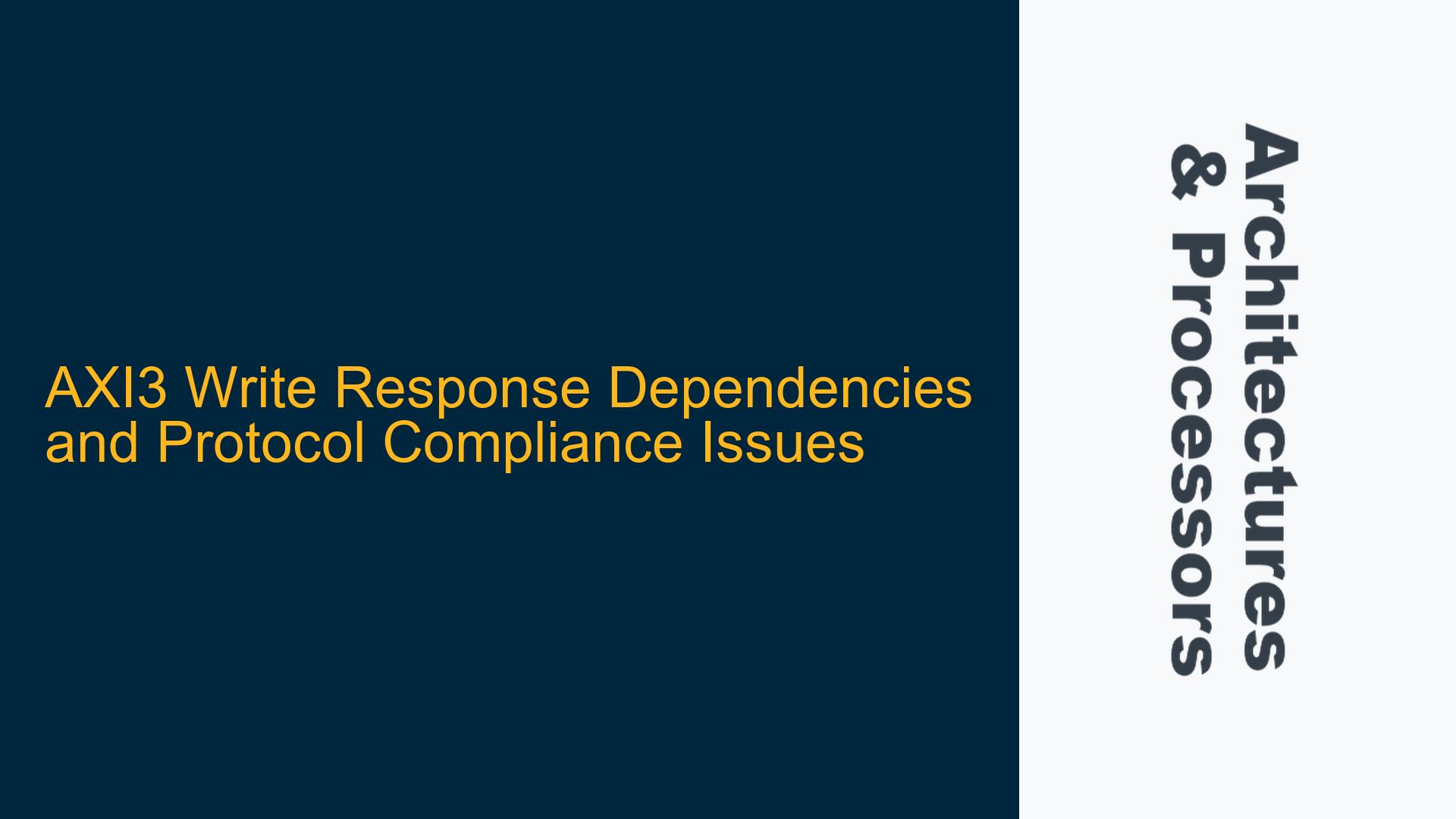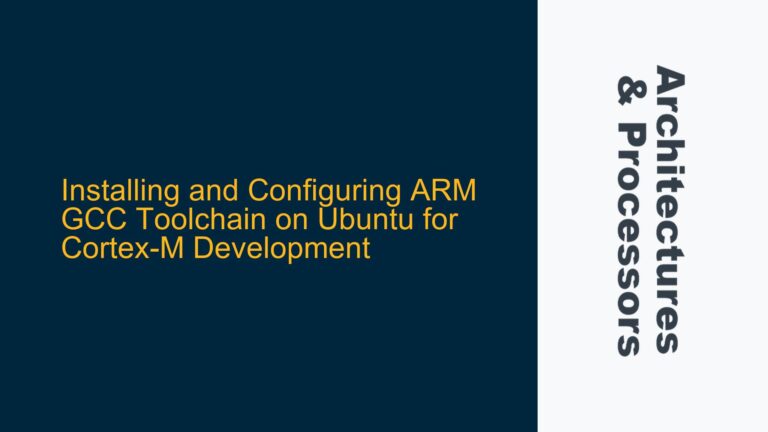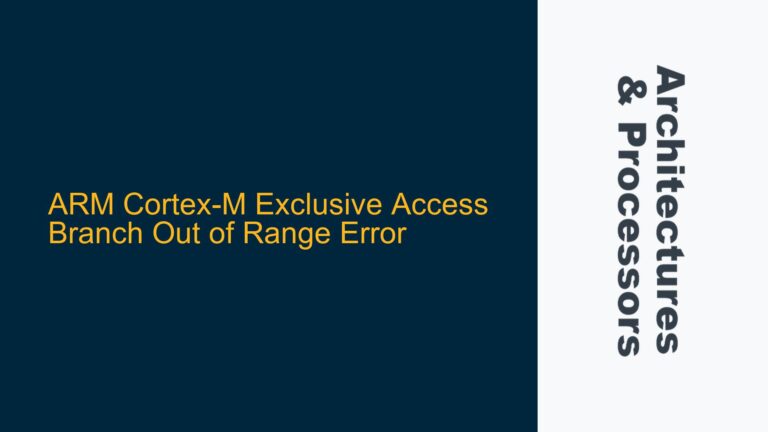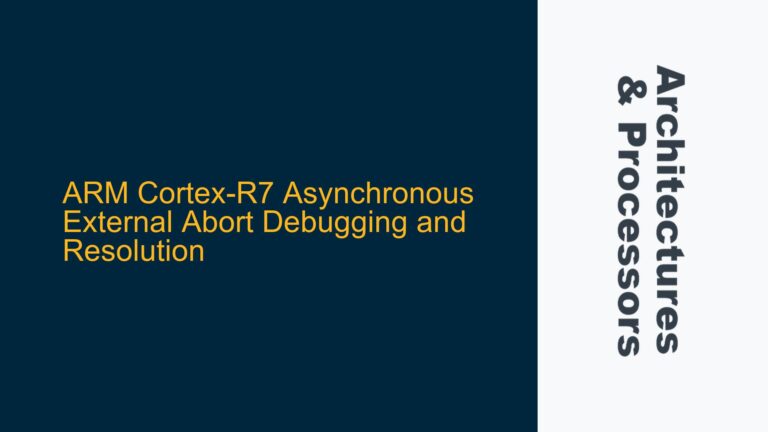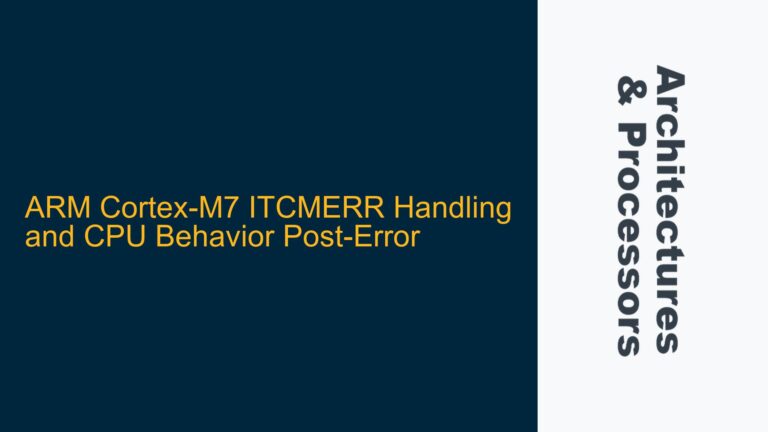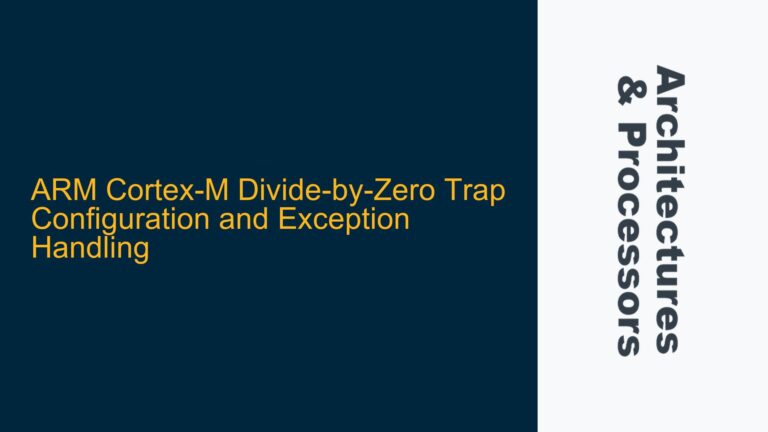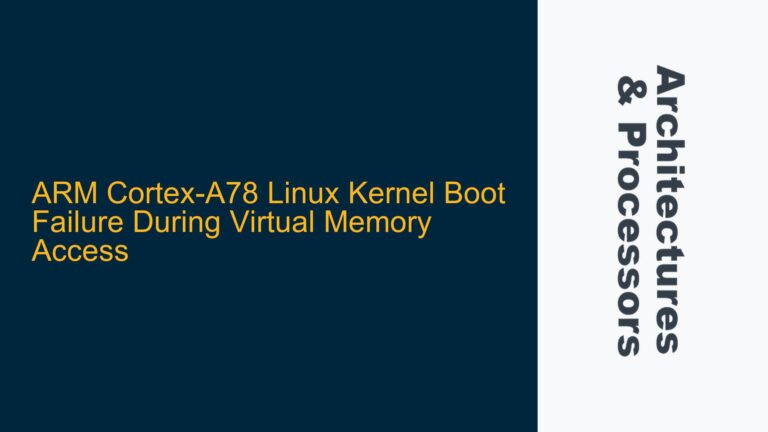AXI3 Slave Returning BVALID Without AW Channel Handshake Completion
In the AXI3 protocol, a critical issue arises when a slave device returns a write response (BVALID) on the B channel without completing the handshake on the AW channel (AWVALID and AWREADY). This behavior is permissible under the AXI3 specification but can lead to significant challenges in system-level integration and verification. The problem stems from the protocol’s allowance for a slave to buffer write data and issue a BVALID response upon receiving WLAST, even if the corresponding AW channel handshake has not yet occurred. This creates a scenario where the slave acknowledges the receipt of data without knowing the destination address or control information, which can cause inconsistencies in system behavior, especially in multi-slave configurations.
The AXI3 protocol’s flexibility in this regard was intended to accommodate theoretical use cases where a slave might not need the AW channel information immediately. For example, in a single-slave system, the interconnect logic might already know the destination, or the slave could buffer the data until the AW channel handshake completes. However, this flexibility introduces ambiguity in real-world implementations, particularly in systems with multiple slaves or complex interconnects. The lack of a strict dependency between the AW channel handshake and the BVALID response can lead to race conditions, data corruption, or incorrect routing of write transactions.
This issue is particularly problematic in systems where the interconnect logic relies on the AW channel information to route transactions correctly. If the slave issues a BVALID response before the AW channel handshake completes, the interconnect might not have sufficient information to ensure that the write data is routed to the correct destination. This can result in data being written to the wrong address or lost entirely, leading to system failures that are difficult to diagnose and reproduce.
Memory Address and Control Information Dependency in AXI3 Write Transactions
The root cause of the issue lies in the AXI3 protocol’s handling of write transaction dependencies. Unlike AXI4, which enforces a strict dependency between the AW channel handshake and the BVALID response, AXI3 allows the BVALID response to be issued independently of the AW channel handshake. This design choice was made to accommodate scenarios where the slave might not need the AW channel information immediately, such as when the slave buffers the write data and processes it later. However, this flexibility introduces significant risks in real-world implementations.
One of the primary risks is the potential for data corruption due to incorrect address or control information. If the slave issues a BVALID response before receiving the AW channel information, it might process the write data based on incomplete or incorrect address information. This can lead to data being written to the wrong location or being lost entirely. Additionally, the lack of a strict dependency between the AW channel handshake and the BVALID response can create race conditions in the interconnect logic, where the interconnect might route the write data to the wrong slave or fail to route it at all.
Another potential cause of the issue is the slave’s buffering mechanism. In AXI3, the slave is allowed to buffer write data and issue a BVALID response upon receiving WLAST, even if the AW channel handshake has not yet completed. While this buffering mechanism can improve performance in some cases, it can also introduce significant risks if not implemented correctly. For example, if the slave’s buffer is not large enough to hold all the write data, it might issue a BVALID response before it has processed all the data, leading to data loss or corruption.
Enforcing AW and W Channel Handshake Completion Before BVALID Response
To address the issue of AXI3 write response dependencies, it is essential to enforce a strict dependency between the AW channel handshake and the BVALID response. This can be achieved by modifying the slave’s behavior to ensure that it does not issue a BVALID response until both the AW and W channel handshakes have completed. This approach aligns with the AXI4 protocol’s handling of write transactions and eliminates the risks associated with the AXI3 protocol’s flexibility.
One way to enforce this dependency is to implement a state machine in the slave that tracks the progress of the AW and W channel handshakes. The state machine should ensure that the BVALID response is only issued after both handshakes have completed. This can be done by adding a check in the slave’s logic that verifies the completion of both handshakes before asserting BVALID. Additionally, the slave should be designed to buffer the write data until the AW channel handshake completes, ensuring that it has the correct address and control information before processing the data.
Another approach is to modify the interconnect logic to enforce the dependency between the AW channel handshake and the BVALID response. The interconnect can be designed to delay the BVALID response until it has received confirmation that both the AW and W channel handshakes have completed. This approach can be particularly effective in systems with multiple slaves, as it ensures that the interconnect has the necessary information to route the write data correctly.
In addition to modifying the slave and interconnect logic, it is also important to update the verification environment to test for this dependency. The verification environment should include test cases that simulate scenarios where the AW channel handshake is delayed or incomplete, ensuring that the slave and interconnect logic handle these scenarios correctly. This can be done by adding constraints to the testbench that control the timing of the AW and W channel handshakes, as well as monitors that check for the correct behavior of the BVALID response.
By enforcing a strict dependency between the AW channel handshake and the BVALID response, it is possible to eliminate the risks associated with the AXI3 protocol’s flexibility and ensure that write transactions are processed correctly. This approach aligns with the AXI4 protocol’s handling of write transactions and provides a more robust and reliable solution for real-world implementations.
Conclusion
The issue of AXI3 write response dependencies highlights the importance of understanding the nuances of the AXI protocol and the potential risks associated with its flexibility. By enforcing a strict dependency between the AW channel handshake and the BVALID response, it is possible to eliminate the risks of data corruption, incorrect routing, and race conditions in AXI3-based systems. This approach not only improves the reliability and robustness of the system but also aligns with the AXI4 protocol’s handling of write transactions, providing a more consistent and predictable behavior across different implementations.
